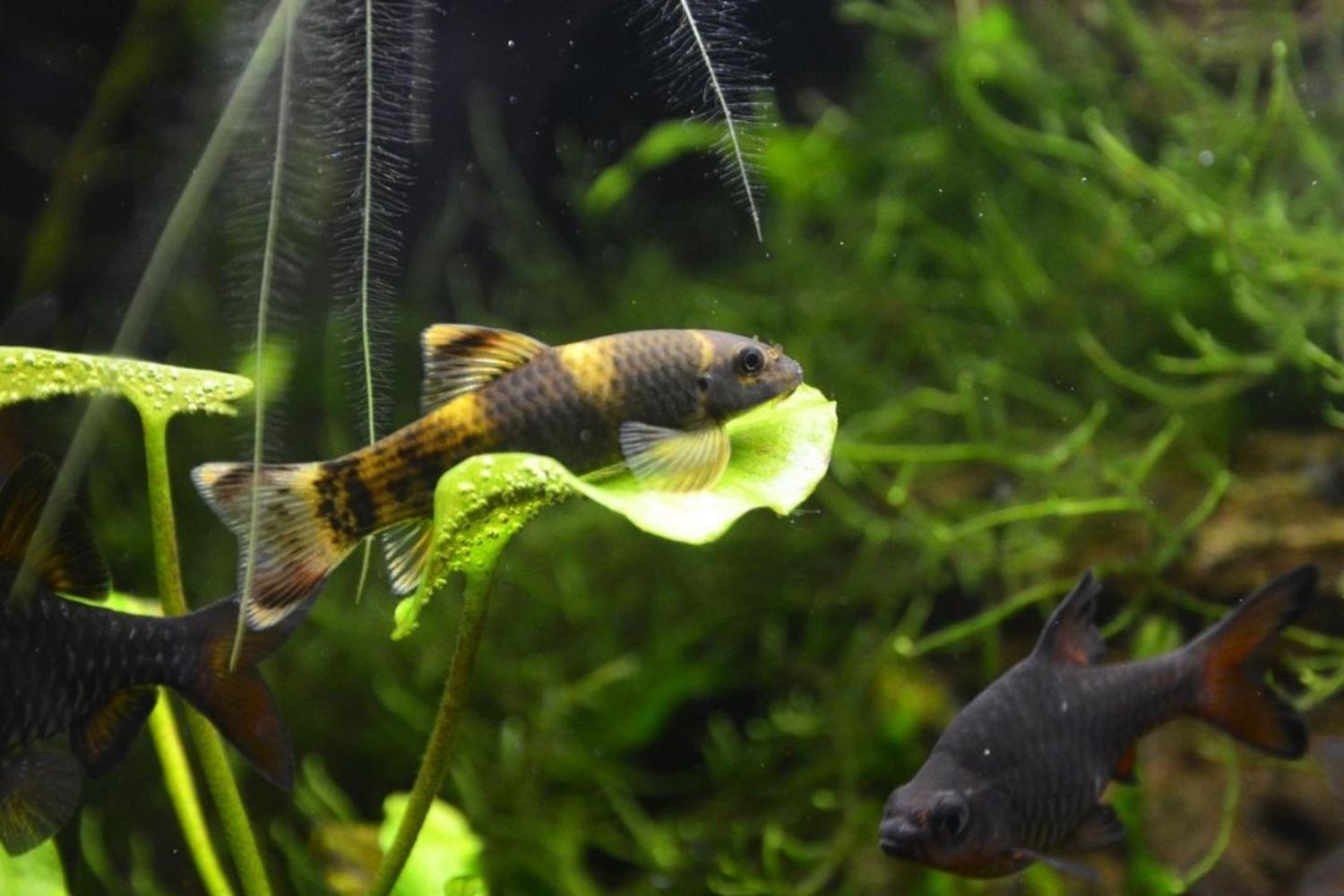Panda Garra, also named Garra Flavatra, was first introduced to the hobby in 2015, so it’s a relatively new species. A really cool and playful freshwater fish with a ton of personality and energy, Panda Garra is one of the most interesting fish we have ever kept. Very peaceful and doesn’t bother any other fish. Even so, he likes to explore all over your tank.
It has a great size which makes it fittable in any tank. We recommend it to keep in a community tank with a lot of tank mates. As algae and biofilm razor, he will help you out and clean up your tank a little bit.
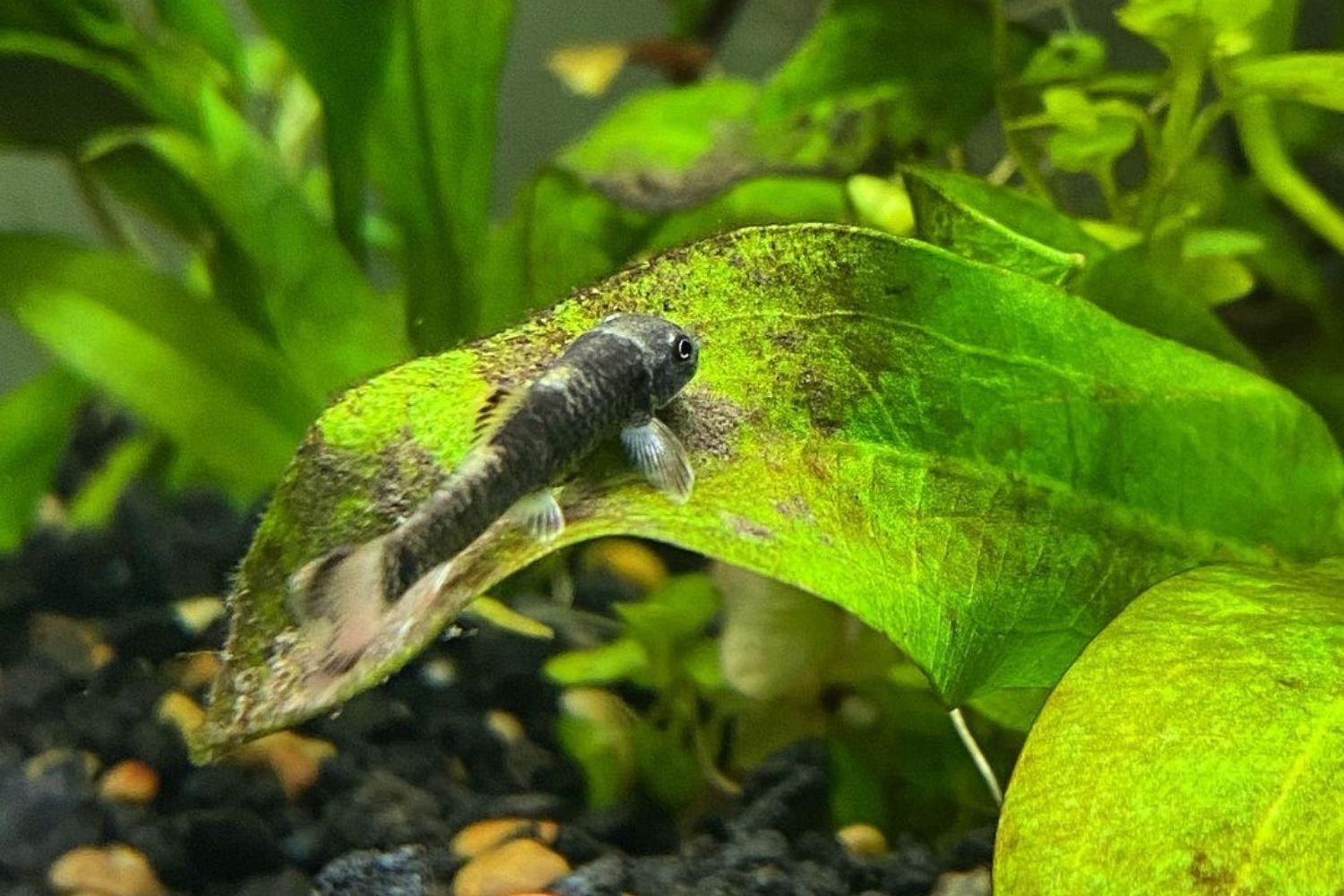
Panda Garra is the ideal fish for tanks with a lot of plans and algae.
It’s good to have Panda Garra in your aquarium if you have a lot of plants. Plants cause a lot of biofilms, and biofilms become a problem if you let them go for a long time as they consume the oxygen that would otherwise diffuse into the water.
Sound a good fit for your tank? Keep reading, as this fish has more to discover.
Overview
Panda Garra it’s very adaptable to any water parameter. Everyone can keep it in their aquarium with almost no additional equipment. Its natural habitats are rivers with high water flow, so it is recommended to have enough water flow into your aquarium to keep this fish.
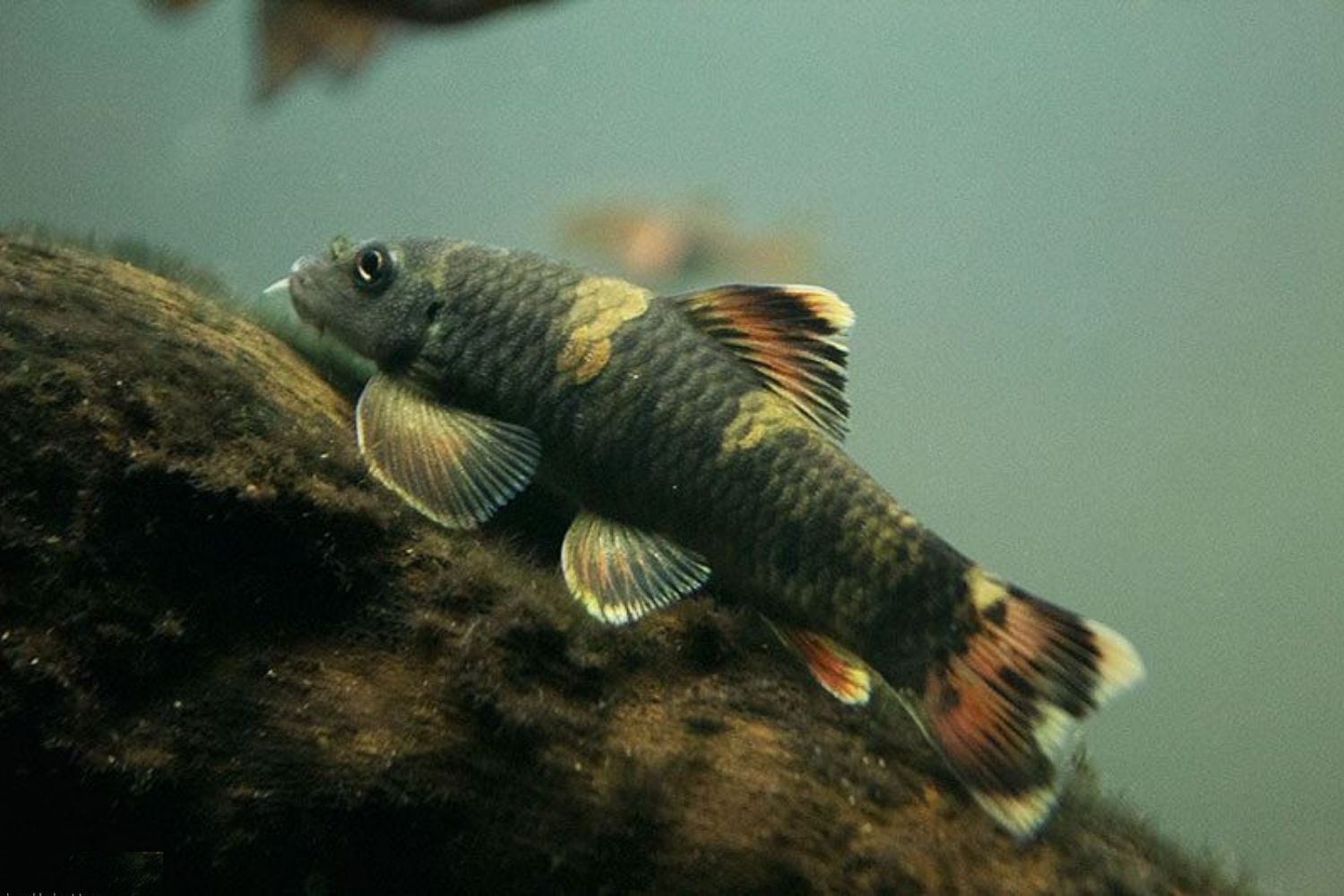
You can easily spot a Panda Garra from his yellow spot and darker colors.
A fish that eats mostly algae and biofilm. He is super easy to feed and accepts a wide variety of foods, especially Spirulina Flakes. Even if you don’t have enough algae in your aquarium, you can still feed it. From our experience, this fish eats quite a lot of protein and has an excellent sense of smell.
| Difficulty | Easy |
| Size | 3.5 inch (9 cm) |
| Lifespan | up to 5 years |
| Tank size | 20 gallons (80 liters) |
| Diet | Omnivore |
| Temperature | 72 – 81 F (22 – 27 C) |
| pH | 6.0 – 7.5 |
| Hardness | 2 – 12 dKH |
| Temperament | Peaceful |
| Breeding | Hard |
| Swimming | All over the aquarium, mostly bottom |
The only thing that these fish don’t tolerate is low oxygen. Make sure to turn off your CO2 system at night if you are using one. We recommend adding an air stone if you are keeping it in a warmer temp.
You should either keep it in a group of 4 to 5 or keep just a single one. Don’t keep two or three.
Some specifications we like about Panda Garra:
- Extremely active and playful.
- A ton of personality.
- Easy to feed and carry
- He loves to travel around the aquarium.
- Clean up your tank from algae and biofilm.
- Fun to watch
This fish is related to Garra Rufa, and some local stores may mess up the names, be aware of that.
Origin & Habitat
Panda Garra was first discovered (collected) in 1998 by Sven O. Kullande, a Swedish ichthyologist. For the origin of this fish, we have to go to Myanmar, Asia. More specifically, at rivers of the Rakhine Yoma mountain in the western part of Myanmar. This is an isolated area that hasn’t been studied that much until recently. Seven new species were discovered there, and one of them is Panda Garra. Odessa Barb is also a freshwater aquarium fish found in similar habitats and locations as Panda Garra.
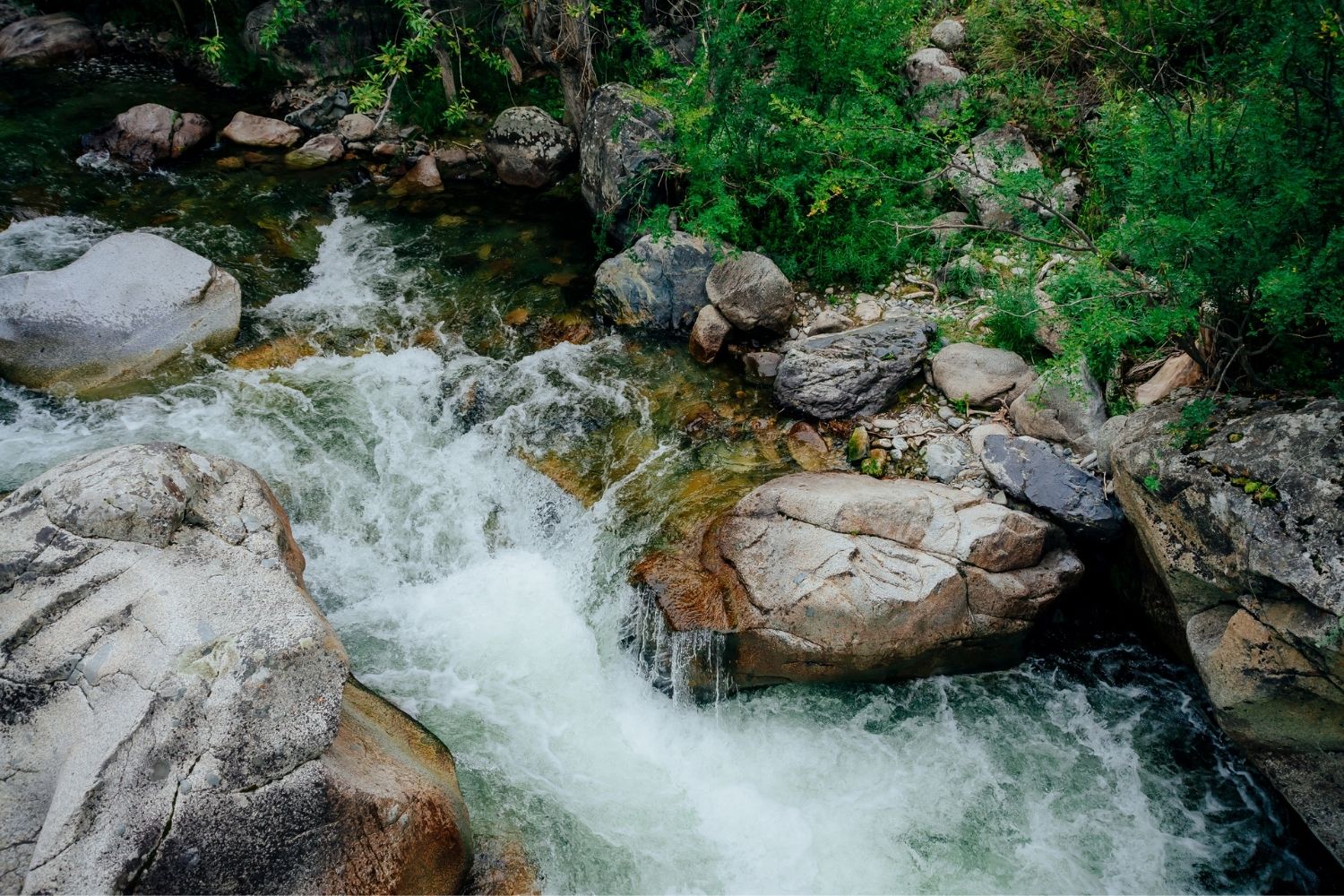
Natural habitat of a Panda Garra. River in Rakhine Yoma mountain – Myanmar.
Another cool fish that has been discovered in the same area is Celestial Pearl Danio, discovered in 2006.
Panda Garra was found in stagnant pools. The natural habitat of Panda Garra are rivers and areas with higher water flows; that’s why we recommend turning the water over 9x 10x per hour.
Appearance and Typical Behavior
Mostly is found in black color with some yellow spots. Panda Garra has a modified lower lip that forms a disc-like “Appendage.” The reason for that is that they can maintain a position in the fast-flowing water while still feeding with biofilm. He does the same in the aquarium, too. He tries to eat the biofilm on the surface of the plants, rock, and other objects.
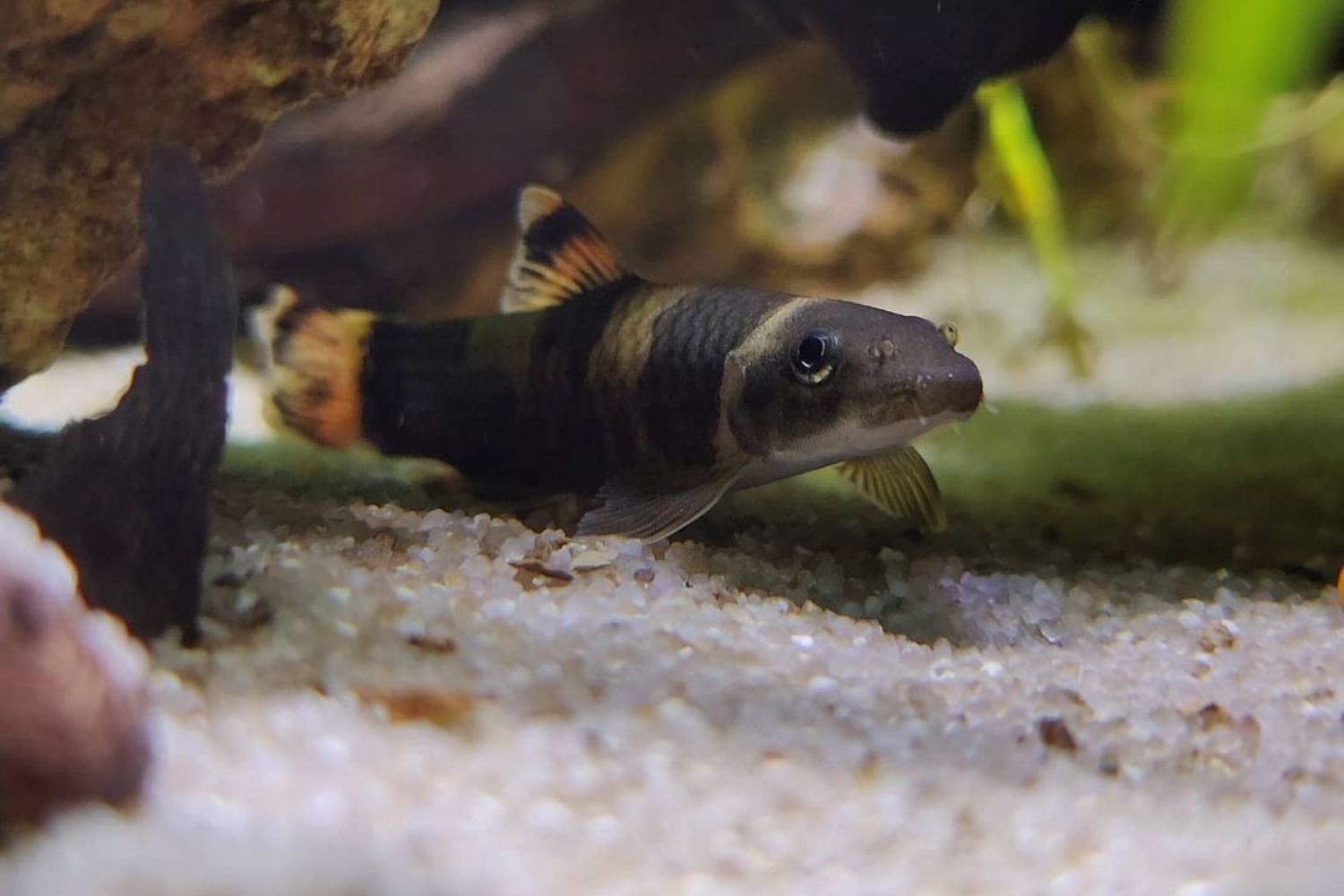
He likes to stay at the bottom of the aquarium, as well as explore all of it.
You may see it eating biofilm at the top of the aquarium too. Their mouths are dis-shaped to hang out tight to rock on fast-flowing rivers so they can still graze biofilm or algae in their native habitats.
Let’s talk about his rare personality. With a lot of energy, Panda Garra likes to swim in all areas of the tank, even at night. It is extremely active and very peaceful. Be careful with these fish as they are notorious for escaping. While we had it in the bag, he could wait to get out.
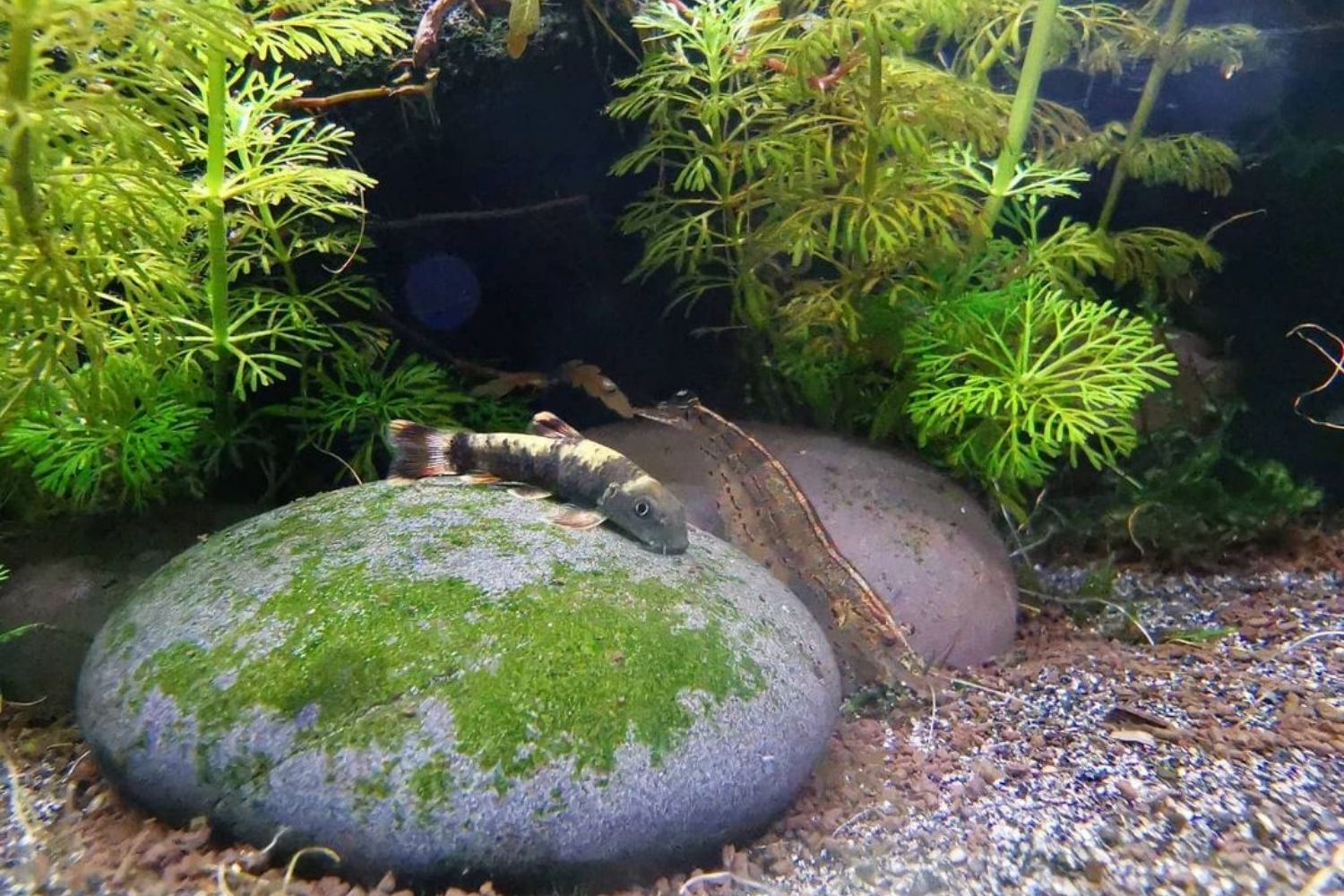
Most of the time, you will see him hanging on the rocks or plant leaves.
What we found funny about Panda Garra was that he loves hanging out on leaves or rocks even though their natural habitat is high-flow rivers. At night you will see it scavenging around. As mentioned, he is active all the time. Every time you will look at the tank, he is doing something.
Diet
Panda Garra is a biofilm and alge grazzor. That’s what they eat in their native habitat. In the aquarium, we don’t just rely on the algae and biofilm, especially if we don’t have enough. There is a wide variety of food that you can feed this fish. He eats almost anything. Panda Garra mostly likes to eat brine, flaked food, pellets, etc.
You can feed Panda Garra also with semi-large foods, like melons, spinach, green beans, etc. Using this type of food at your aquarium may ruin the water quality. Make sure you take it out of your aquarium in a few hours. He can eat different types of worms like bloodworms, tubifex worms, white worms, and brine shrimp and wafers too.

A biofilm and algae grazzor.
Tank Conditions
With almost no additional equipment, you can keep Panda Gurra in your tank. Except for the water flow, these fish need no other condition as an essential. We advise following a few parameters to make him happy and low his stress.
Tank Size
It’s recommended to keep it on a 20-gallon tank or bigger. These fish like to swim a lot, and a nano aquarium will stress them out.
Water Parameters
Panda Gurra is very adaptable to water parameters.
The temperature of the native habitat for Panda Gurra is between 72 – 81 F (22 – 27 °C) during the summer months. In the aquarium, he can live at almost any temperature, but if you have the right gear, try keeping the temperature at his natural habitat.
You can keep them on a neutral pH of 6.0-7.5 and at a recommended hardness of soft to medium (2-12 dKH).
Even if this parameter is not followed, this fish doesn’t seem to show any effect at all. If you can’t meet the neutral pH, don’t panic. The fish will be fine.
Breading
Panda Garra is a seasonal breeder, and it’s a very hard process that needs to be done under special conditions.
In its native habitat, Panda Garra breed during the rainy season (May to July) when water is high in oxygen and the pH is at its neutral level. Try to keep this condition in a separate tank with only a male and female Panda Garra. To help the process feed them regularly with a high amount of protein.
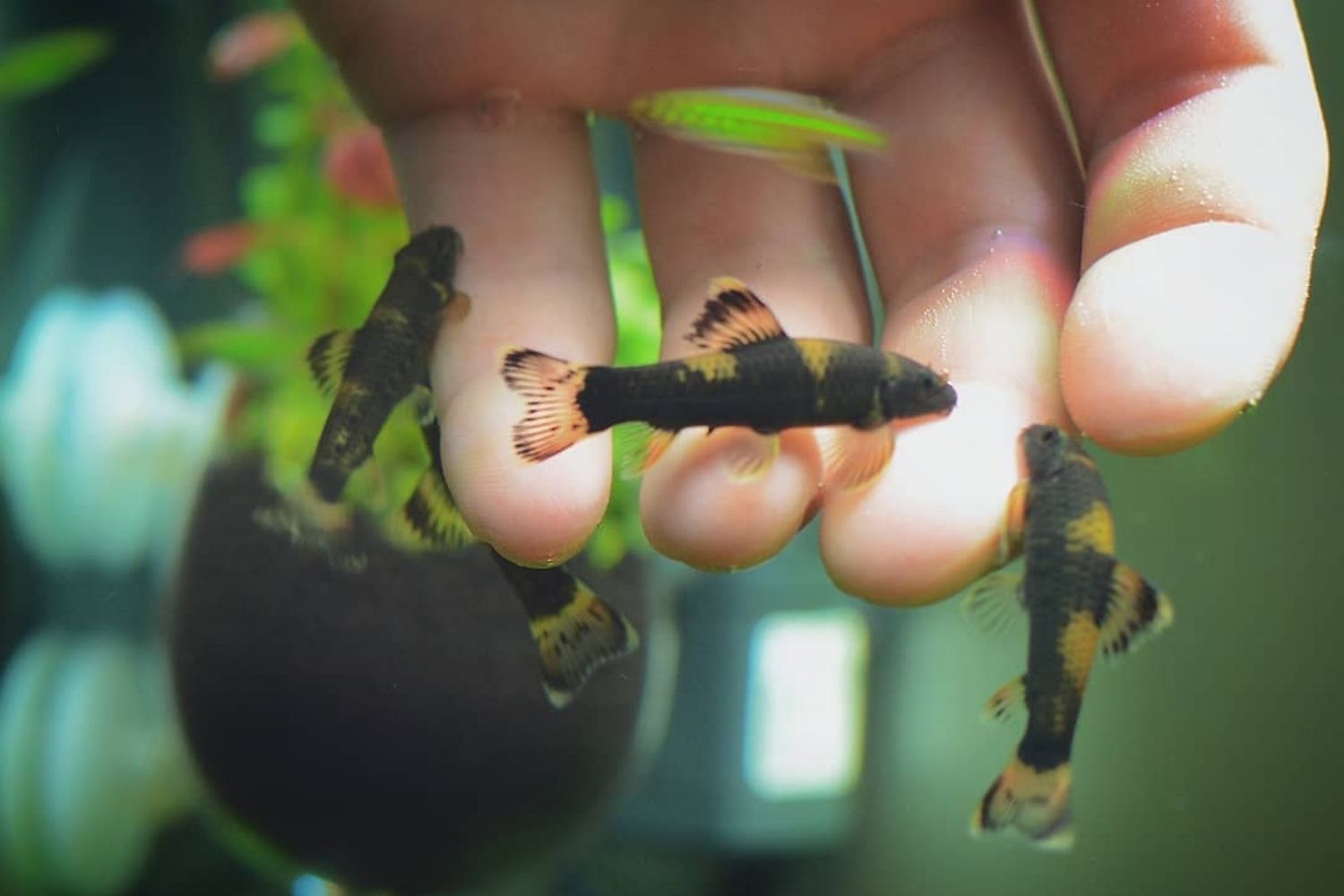
Panda Garra fish after a few days of hatching.
If breeding is done successfully, the female with lay her eggs, which will hatch within three days. Remove the couple of fish instantly as you see the eggs, as they may eat all of them. Yes, you heard it right, Panda Garra doesn’t have parental instinct.
Ideal Tank Mates
As a peaceful fish, Panda Gurra can be kept in a community tank. Make sure other mates are peaceful too and won’t annoy it.
Some good mates for Panda Garra are
- Neon Tetra
- Guppies, Mollies
- Albino Bristlenose Pleco
- Pygmy Cory etc.
You must have a lot of algae and plants in your aquarium, so this fish can eat, play or even hang on the plant leaf. You can plant some Subwassertang into your tank as they are easy to care for and grow very fast.
Conclusion: Are Panda Garra Suitable for your Aquarium?
Definitely, yes, we kept Panda Garra in our aquarium, and we love their behavior. With their unique personality and with no difficulty in carrying and feeding them, Panda Gurra can be considered one of the must-have freshwater fish.
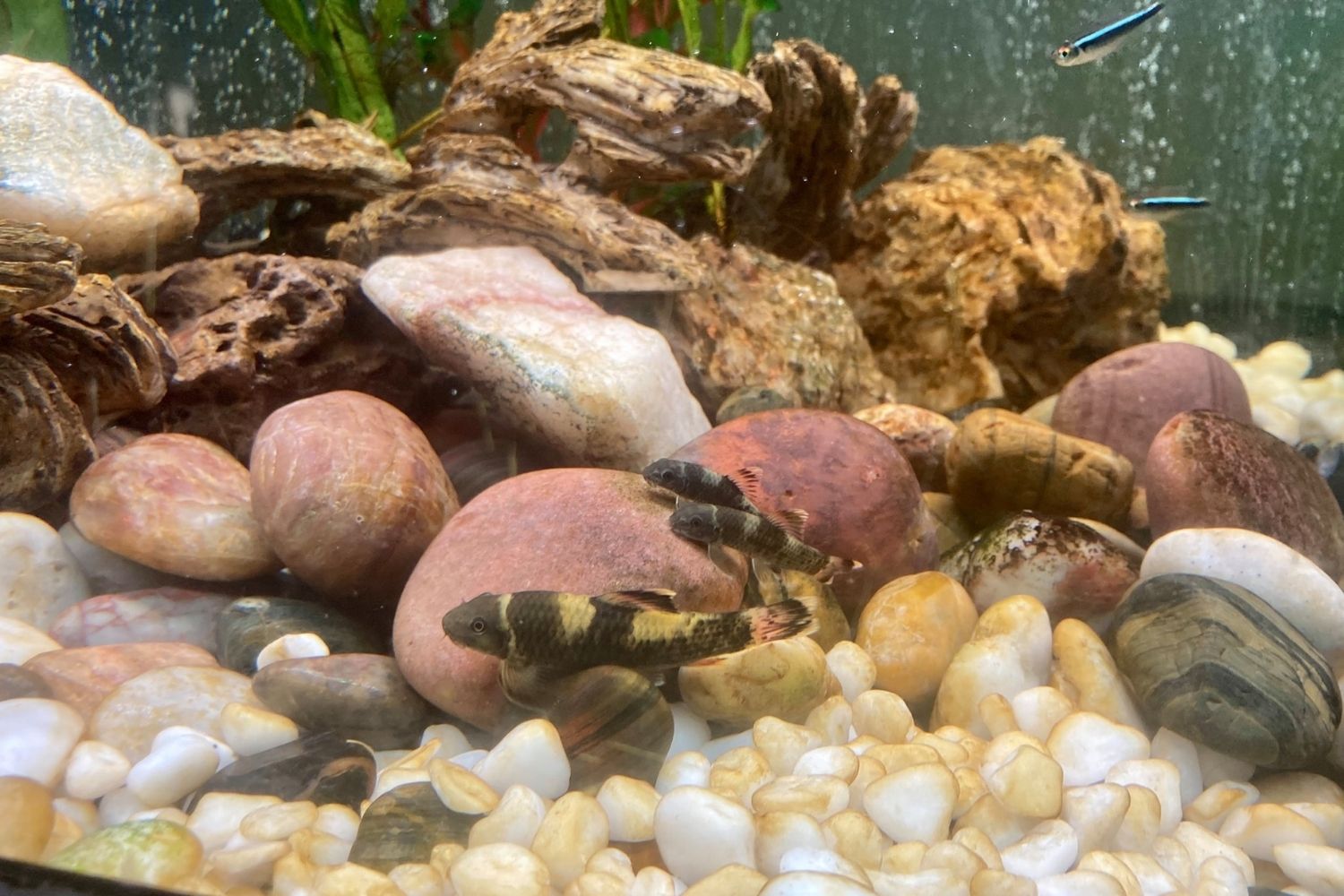
We keep it almost at every of our peaceful community.
No additional equipment is needed to keep this fish, except high flow water conditions which can easily be created by a filter, air pump, or an air stone. As e peaceful fish, it won’t harm other species. Instead, it will swim around your aquarium all day and night.
Frequently Asked Questions About Panda Garra
Since Panda Garra is a new spice, you may have a lot of questions. We will try to answer some of them.
Q: Is Panda Garra aggressive?
Panda Garra is a very peaceful fish. He won’t harm or annoy other fishes in your tank. You can keep it in a community tank with small and nonaggressive fish.
Q: How big does Panda Garra get?
Panda Garra grows up to 3.5 inches (8cm) to a maximum of 4 inches. We recommend it to keep in 20-gallon fish tank or bigger. These fish stress out in nano aquariums as he likes to swim a lot.
Q: How long do Garra Rufa fish live?
Panda Garra lives for an average of 4-5 years.
Q: Will Panda Garra eat snails?
Yes, he can eat snails. Panda Garra can eat a variety of food, such as worms, algae, biofilm, etc. It’s very easy to feed this fish as he is an Omnivore.
